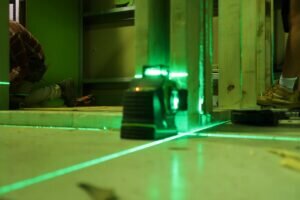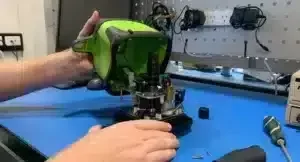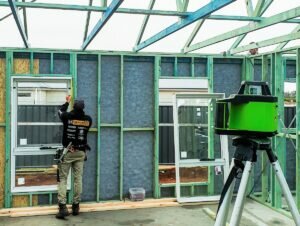The spirit level in its current form goes back to 1661 when the first recorded spirit level bubble was invented by Melchisedech Thevenot, a French scientist and librarian in King Louis XIV’s court.
Made using a timber frame, it has largely been unchanged since then; other than the frame being mass produced in lightweight aluminium, the humble spirit level has been the mainstay of levelling for every tradesman since then for the straight installation of structural framework, cladding, bricklaying, tiling, cabinet and shop fitting and lots more.
In the last few years there has been a new iteration of this invention; the digital spirit level.
So, if the traditional bubble level has been working so well for so long, why do we even need a digital spirit level?
We answer that.
5 Advantages of a Digital Spirit Level
- Improved precision: digital spirit levels are accurate within less than 1mm per metre (ours are 0.1mm per metre accurate at level), even when measuring overhead. But it’s not so much the accuracy as the digital display which ensures the precision. With the digital display, you can read the exact measurement and it will even tell you which way to move the tool to get things spot-on.
- Ease of use: as well as the digital display, there are several other features which make a digital spirit level even easier than a traditional level to use. Many have an illuminated display, and some feature audio acoustic tilt guidance, giving a buzzer alert when you’re at 0 and 90 degrees (and at 45 degrees if you’re using our EL60 Digital Level. Both features come into their own when you’re working in dark or tight spots.
- No need for other angle tools: a digital spirit level can be zeroed at any angle (called setting a false zero). This enables you to set any angle to benchmark against, making it easy to repeat the same angle, perfect for finding the cut angle for handrails, for example.
- On-site calibration: if your traditional spirit level starts to lose accuracy, you have little choice but to send it back to the manufacturer for recalibration. If your digital spirit level takes a knock, it can simply be recalibrated on-site using any flat surface, saving you time and ensuring ongoing accuracy.
- Customised readings: with the option on many digital spirit levels to change your reading from degrees to percentages and even mm/m, you can save yourself the time and brainwork which might otherwise be needed for conversions.
Finally, a word of caution: there are a number of digital levels on the market and it is important to check that what you are about to purchase is up to the job. Check the accuracy reading; make sure the digital display unit is mounted firmly and tightly within the frame so as to have no movement; confirm that it has a calibration function, as well as a zero hold setting.
It is also prudent to make sure the aluminium frame has enough ribbing to have necessary torsional strength and sturdy end caps, preferably rubberised to soak up any falls or bumps, a milled edge for greater accuracy and a canvas bag for protection when not in use.
An iMEX EL60 600mm or an EL120 1200mm is a great way to move into the digital spirit level age.






